Sharing Their Truths: Working Parents Reveal the Benefits That Matter Most
Each year, HR leaders ask themselves: What benefits do my employees want? And what will provide me the most ROI? But many are left without answers.In a recent survey of 2,000 working parents conducted by Ovia Health, 62% said that their employers are not family friendly enough.The need for family friendly benefits is clear. Additionally, 94% said family benefits are a top priority and 73% said they would consider making a lateral move to another organization that offered better benefits and a family-friendly culture.In a From Day One webinar, Corrinne Hobbs, general manager and vice president, employer market organization at Ovia Health, discussed the results of the survey. Hobbs offered insight on current benefits offerings, where more support is needed, and what matters most to employees. Family Benefits That Match Today’s Culture“Women’s health benefits are one of the fastest growing segments within healthcare,” Hobbs said. This is due to changing circumstances during and post-pandemic as more and more workers experienced shifting work-life balance due to hybrid schedules. It’s also due to the increasing range of types of families that need to be accounted for as lifestyles become more diverse. In this current marketplace, “employees have more control and more power than they have had in the past,” said moderator Siobhan O’Connor, chief content officer at Atria Institute. Therefore, it’s even more critical that employers make sure these specific needs are being served.While most companies do offer some family benefits, Hobbs says, there is often a disconnect between perceived needs and actual needs of employees. “There’s a strong push for employees to have better fertility benefits in their workplace. And 38% of respondents said that they’re looking for their employer to provide alternate family planning support,” Hobbs said. This is especially true with more and more single by choice or LGBTQIA+ parents in the workforce, and an overall trend of people waiting until later in life to have children. Unfortunately, many workplaces do not offer benefits to cover the costs of these services, which can be exorbitant.Siobhan O'Connor of Atria Institute interviewed Corrinne Hobbs of Ovia Health during the webinar on family-friendly benefits (photo by From Day One)Incorporating these benefits helps build an overall inclusive corporate culture and can be a way to help retain senior level female employees. Additionally, 83% of respondents said that perimenopausal or menopausal symptoms affect their ability to work, but only 1% receive benefits to help with those symptoms, says Hobbs. In order to “make sure that whatever you’re providing is equitable and inclusive all around,” a diverse range of age and gender must also be factors incorporated into a comprehensive benefits plan.Providing Better Family BenefitsWith family benefits top of mind for employees, Hobbs says there is a clear way forward for organizations looking to provide better care. The most important, according to respondents, is family leave. Hobbs advises: “Make sure that it’s paid, that it’s for at least four months, that it’s inclusive to both parents and that you don’t have to dip into your sick leave or your PTO before taking leave. That is a stress factor for many.” And employers must account for alternate pathways to parenthood, such as adoption, which might entail different costs or timeframes, she says.Hobbs says employers should not only plan for parental leave, but also for parental return. One way to do this is by setting up a return-to-work program to make it easier for parents to re-enter the workforce, noting that it’s a smarter investment than having to endure the cost of hiring someone new. Gradual part-time schedules can ease the burden on stressed parents, as can accommodating PTO policies, flex time, and hybrid or work from home options.Additionally, managers need to be prepped on how to work with returning parents. “A manager training program to ensure a family friendly workplace and ensure that people are able to bring their full selves to work without fear of repercussions is critical,” Hobbs said. ERG support groups can also provide a sense of community support within the workplace.Incorporating Digital Healthcare and AdvocacyOvia Health uses predictive analytics to power millions of members’ care and engagement with their health. Such apps can help provide crucial education about health symptoms, Hobbs says. For example, 85% of respondents said they don’t know much about menopause and how it may affect their performance. Ovia can help fill that gap through online resources, and also provide peer support groups. “We have a community wall where people with uteruses can talk about symptoms together and really feel a sense of community and commonality with others who are going through some of the [same] things,” Hobbs said. Finally, Ovia can also match employees with proper treatment.Using health assessments and surveys, Ovia gets to know its users and can provide highly personalized information to current, expecting, or potential parents. Health alerts will pop up based on users’ reported symptoms, and the app even provides proactive healthcare outreach to guide users through any bumps on their fertility journey.“Digital solutions offer round the clock access, education, and opportunities to really delve deeper into topics,” Hobbs said. “And they also come with advocacy, helping you navigate and understand these complex situations.” The app accounts for a wide variety of families and lifestyles, helping employers provide better care to a diverse workforce. “We have 50+ personalized clinical pathways and programs to support women and families, and then we personalize the experience for each member based on the dynamic health assessments and digital symptom report,” Hobbs said, describing the data-driven service as “person-centered care.”Hobbs says that while women have increasingly reached the upper echelons of the corporate world in recent years, women’s participation in the labor market is currently at a 33-year low. Having a family-friendly workplace can help ensure talented women stay on. “It costs upwards of $75,000 to replace an employee,” Hobbs said. By offering a diverse suite of benefits companies can retain top talent, encourage a more diverse workforce, and save money in the process.Editor's note: From Day One thanks our partner, Ovia Health, for sponsoring this webinar. Katie Chambers is a freelance writer and award-winning communications executive with a lifelong commitment to supporting artists and advocating for inclusion. Her work has been seen in HuffPost and several printed essay collections, among others, and she has appeared on Cheddar News, iWomanTV, and CBS New York.






